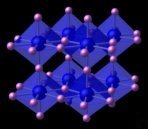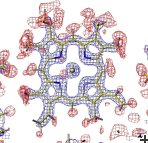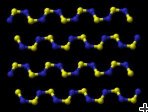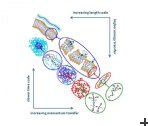Copyright 2012 neutronsources.org | All rights reserved. | Powered by FRM II | Imprint / Privacy Policy
Scientific Disciplines
Biology
Structure function and dynamics of biological macromolecules operate across a wide range of time and length scales that are well matched to the fundamental characteristics of neutron scattering. The need to understand these systems at the atomic, molecular and cellular level now demands an integrated suite of cutting-edge instruments that will enable new opportunities to be exploited across the life sciences.
Chemistry
The study and understanding of the H-bonding holding together complex molecules, and arrays of molecules, has an important impact on pharmaceutical materials and supra-molecular chemistry, allowing more rational molecular engineering.

Materials Science
Structure sensitive imaging will add a new dimension to real scale tomography and radiography. Large field, high resolution images will display the distribution of structures in a material. Real time tomography of hidden objects, such as lubricants or cooling fluids, will become possible thanks to experiments with neutrons.

Particle Physics
The neutron can be seen as a composite particle consisting of quarks, virtual pions and gluons. Its internal structure determines the decay process, the magnetic moment, and an anticipated electrical dipole moment that would indicate new physics beyond the Standard Model of particle physics. Related measurements can be performed using cold and ultra-cold neutrons. Essential contributions can be expected to the unification of fundamental forces in nature.
Soft Matter
Soft matter encompasses a wide range of materials found everywhere, both naturally and man-made, such as polymers (plastics), surfactants (soaps and detergents), liquid crystals (in electronic displays), micelles and biological matter such as cell membranes. Neutron scattering techniques play a unique role in the study of both the structural and dynamical properties of the wide range of substances categorised as “soft matter”. Among the advantages presented by these techniques, two are of crucial relevance in the soft matter field: the suitability of the length and time scales accessed by neutrons, and the capability to manipulate the contrast by specific deuteration of any constituent of the system. Neutron scattering is the only tool for unravelling the molecular morphology and motions in soft matter systems at the different relevant length scales. On the other hand, the understanding of structural properties and dynamics at a molecular level is the key for advancing this field.


